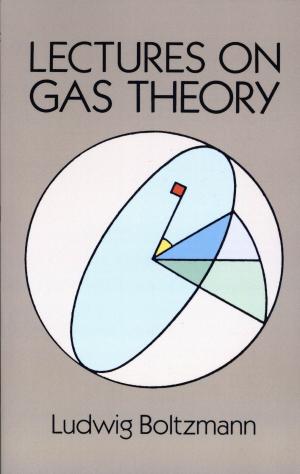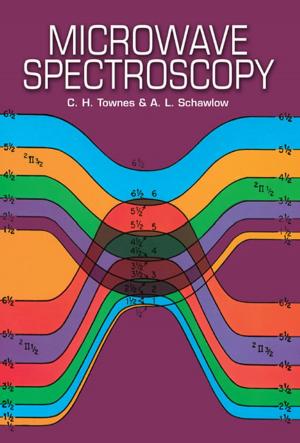| Author: | Jim Spinosa | ISBN: | 9781370575152 |
| Publisher: | Jim Spinosa | Publication: | September 24, 2014 |
| Imprint: | Smashwords Edition | Language: | English |
| Author: | Jim Spinosa |
| ISBN: | 9781370575152 |
| Publisher: | Jim Spinosa |
| Publication: | September 24, 2014 |
| Imprint: | Smashwords Edition |
| Language: | English |
“Bell’s Inequality Untwisted” is a unique book. My aim is to explain in detail all the equations and statements in John S. Bell’s ground-breaking paper, published in 1964, “On the Einstein Podolsky Rosen Paradox.” I attempt an in depth explanation of Bell’s paper in a way that is understandable to a wide audience. In the process of explaining every equation in detail, it becomes clear that Bell’s 1964 paper is a series of incoherent equations, and his famous eponymic inequality is an unjustified assertion. Bell’s elliptic style of writing calls out for comprehensive explanations of his equations. Explanations that fill the lacunae in his mathematical system are an imperative. When the gaps in his system are filled, the inconsistent and illogical nature of his reasoning becomes clear. Bell’s inequality holds a very important place in the development of quantum mechanics. The fact that the profound shortcomings of Bell’s paper are not widely known is telling.
I have found trying to promote my e-books to be quite difficult. Trying to promote “Bell’s Inequality Untwisted” has made me think about Murphy’s Law, i.e., everything that can go wrong will go wrong. It took a good deal of effort to give the many equations in the text a professional appearance. In a technical sense they are all photographs, which is why they rise slightly above the line of text in which they have been placed. It is also difficult to understand exactly how my original e-book description came to have a second paragraph that was essentially a recapitulation of the first paragraph. My supposition is that such an unprofessional error dissuaded many potential readers from downloading my e-book. From a certain point of view, it seems Murphy’s Law is a cloak to hide the operation of sinister forces. Why would a rational person assume that everything that can go wrong will go wrong? Gremlins seem to be relegated to “Bugs Bunny” cartoons, a famous “Twilight Zone” zone episode certain movies, but are they a hidden factor in our everyday lives?
It is difficult to know the appropriate message to give to a potential reader. Anyone reading this book description should download my e-book; the complex math is explained in detail, and the details are understandable. My e-book is an honest and straightforward analysis of Bell’s inequality; it is an attempt to cut through the miasma surrounding one of the most influential theories in quantum mechanics. The crux of my refutation of Bell’s inequality is presented in chapter 4 “A Tree at Night.” The reader may begin reading at that point if he thinks he would find the introductory material tedious and repetitious. The mathematical errors that John Bell makes concern basic algebra, if indeed they are errors and not deliberate attempts to deceive. I refreshed my understanding of basic algebra by watching the DVDs put out by a group of educators going under the name of the Standard Deviants. I watched such titles “Algebra Adventure” and “Pre-Algebra Power.” They were both entertaining and informative. One of the mistakes John Bell makes is an error in solving an inequality that contains terms within an absolute value sign. The correct method for solving an inequality containing terms within an absolute value sign is covered in one of the Standard Deviants DVDs and will likely be contained in any algebra textbook. The correct method is also discussed in my e-book.
It is difficult to know what tone to take with this extended promotional blurb. I turned to the “Collected Fictions” of Jorge Luis Borges for inspiration, but to no avail. Perhaps, I should have consulted a collection of Latin phrases.
“Bell’s Inequality Untwisted” is a unique book. My aim is to explain in detail all the equations and statements in John S. Bell’s ground-breaking paper, published in 1964, “On the Einstein Podolsky Rosen Paradox.” I attempt an in depth explanation of Bell’s paper in a way that is understandable to a wide audience. In the process of explaining every equation in detail, it becomes clear that Bell’s 1964 paper is a series of incoherent equations, and his famous eponymic inequality is an unjustified assertion. Bell’s elliptic style of writing calls out for comprehensive explanations of his equations. Explanations that fill the lacunae in his mathematical system are an imperative. When the gaps in his system are filled, the inconsistent and illogical nature of his reasoning becomes clear. Bell’s inequality holds a very important place in the development of quantum mechanics. The fact that the profound shortcomings of Bell’s paper are not widely known is telling.
I have found trying to promote my e-books to be quite difficult. Trying to promote “Bell’s Inequality Untwisted” has made me think about Murphy’s Law, i.e., everything that can go wrong will go wrong. It took a good deal of effort to give the many equations in the text a professional appearance. In a technical sense they are all photographs, which is why they rise slightly above the line of text in which they have been placed. It is also difficult to understand exactly how my original e-book description came to have a second paragraph that was essentially a recapitulation of the first paragraph. My supposition is that such an unprofessional error dissuaded many potential readers from downloading my e-book. From a certain point of view, it seems Murphy’s Law is a cloak to hide the operation of sinister forces. Why would a rational person assume that everything that can go wrong will go wrong? Gremlins seem to be relegated to “Bugs Bunny” cartoons, a famous “Twilight Zone” zone episode certain movies, but are they a hidden factor in our everyday lives?
It is difficult to know the appropriate message to give to a potential reader. Anyone reading this book description should download my e-book; the complex math is explained in detail, and the details are understandable. My e-book is an honest and straightforward analysis of Bell’s inequality; it is an attempt to cut through the miasma surrounding one of the most influential theories in quantum mechanics. The crux of my refutation of Bell’s inequality is presented in chapter 4 “A Tree at Night.” The reader may begin reading at that point if he thinks he would find the introductory material tedious and repetitious. The mathematical errors that John Bell makes concern basic algebra, if indeed they are errors and not deliberate attempts to deceive. I refreshed my understanding of basic algebra by watching the DVDs put out by a group of educators going under the name of the Standard Deviants. I watched such titles “Algebra Adventure” and “Pre-Algebra Power.” They were both entertaining and informative. One of the mistakes John Bell makes is an error in solving an inequality that contains terms within an absolute value sign. The correct method for solving an inequality containing terms within an absolute value sign is covered in one of the Standard Deviants DVDs and will likely be contained in any algebra textbook. The correct method is also discussed in my e-book.
It is difficult to know what tone to take with this extended promotional blurb. I turned to the “Collected Fictions” of Jorge Luis Borges for inspiration, but to no avail. Perhaps, I should have consulted a collection of Latin phrases.















